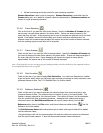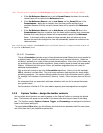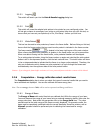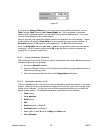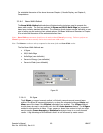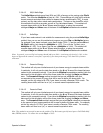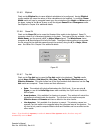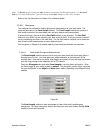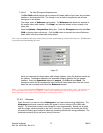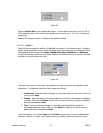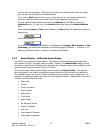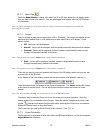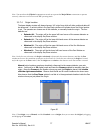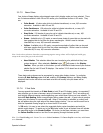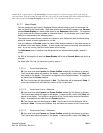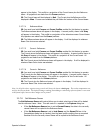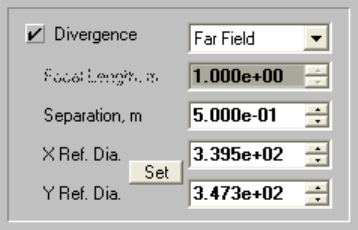
3.2.6.8.2 Far-Field Divergence Measurements
The Far-Field method requires you to measure the beam widths of your laser at two known
locations in the beams far-field. The change in size is used to compute the rate of beam
divergence in mili-radians.
First collect a pair of Reference beam widths. The Reference data should be acquired at
the smaller beam width location. Click Stop!, and note the location of your camera in the
beam path.
Open the Options…Computations dialog box. Check the Divergence box and select Far
Field in the drop down edit control. Click the Set button to transfer the current Reference
beam widths into the provided edit control boxes.
Note: You can manually enter these values from a previous measurement if you know what they are. The Set button
is provided to facilitate making this entry.
Figure 27
Move your camera to the larger beam width sample location, noting the distance traveled by
the camera. The distance traveled is the separation distance between the two sample
locations. Enter this Separation distance in meters. Click OK and then Start! The
divergence results will be computed for both the X and Y axes based upon how the current
beam size has increased from that of the Reference sample.
Notice: It is not recommended that Elliptical be enabled when making this measurement, rather you should rotate
your laser/camera to be X and Y axis aligned. Under certain conditions the rate of divergence could cause the
major and minor axes to swap in the far field region, yielding false results.
3.2.6.9 Histogram
Check this box if you want to view a Histogram of your laser beam’s energy distribution. The
Histogram graphic and numerical results will appear in its own window of the LBA’s main
display. The size of each bucket in the histogram is user programmable. Bucket size is based
upon the integer values produced by the A to D converter. If required, the bucket size will be
converted to floating point values to reflect the processing effects of an energy calibration. The
buckets are sized up (plus) and down (minus) from zero.
Operator’s Manual LBA-PC
Doc. No. 10654-001, Rev 4.10
73



